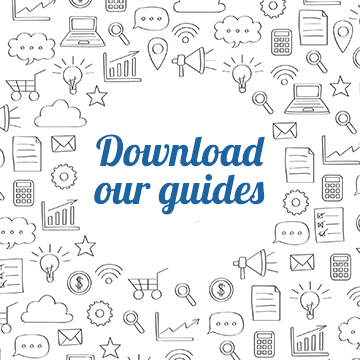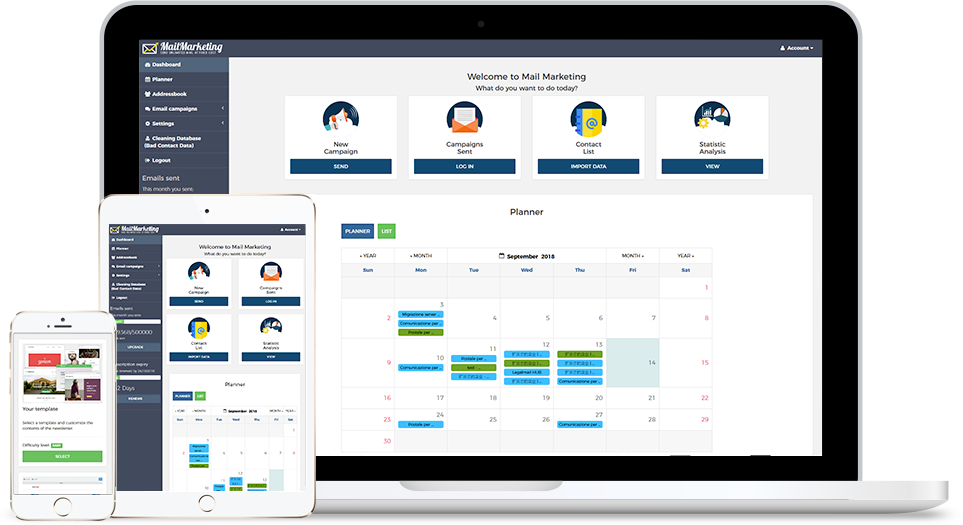Approaching its 50th birthday email is a content marketing grande dame. Compared to social media, apps and emerging technologies like Alexa, email marketing may not be sexy, but its effectiveness is undeniable.
Half the world’s population use email. Every day, 269 billion business and consumer emails are sent and received, with this figure expected to hit 320 billion by 2021.
It’s not these stats that make content marketers sit up (or fall off) their chairs though.
It’s ones proving email, well, works – and really well too. We know, for instance, that it trounces social by 40% for customer acquisition and that for B2B audiences it’s the third most important source of information. Research also tells us that 59% of B2B marketers single it out as their most effective channel when it comes to generating revenue (some even say it gets them US$38 for every one dollar spent). This one’s from Adobe’s 2017 survey: 61% of consumers say they’d prefer to get promotional messages from brands over social, direct mail or mobile apps. That’s a 43% year-on-year lift too.
Should we be surprised? Probably not. Where else, after all, do marketers have such direct, data-rich access to a group of loyal individuals? People who will disrupt their own conversations and sandwich-eating to tap open their Gmail; who fill their commutes and downtime clicking through to hear what you have to say. These audiences are owned, returning and – thanks to increasingly sophisticated martech tools – can be hyper-targeted for context-driven message delivery. On what other channel do the golden bells of ‘right place, right message, right audience’ chime so sweet?
Email marketing isn’t without its challenges though. A recent DMA study found that while email is the “bedrock on which the majority of marketing campaigns operate”, it is also leaving marketers “struggling to ensure they have the full range of skills necessary to conduct effective email marketing”. Here, we lay out a few insights and tips to help marketers execute the smoothest deployment of their email marketing campaigns.
It’s not about volume
How many emails are you cranking out each month? Each week? Each day?
Adobe’s consumer survey also found that half of consumers feel marketers are sending email too frequently, meaning it may be time for your marketing team to slow down. Whether it means putting checks on turbo-charged automation, doing some strategy revision, or having frank conversations with execs, the lesson is this: poke your audience too often, and you’re going to push them away.
To quote Digiday’s Editor Brian Morrissey, a keynote speaker at the recent 2017 ADMA Global Forum: “The hardest thing with email is that the data will always tell you to shove another one through the pipeline. But do you want to be known as a spammer?”
It’s not about size
Another takeaway from the Adobe survey: image-loading irritation is a thing for mail-checkers. So is scrolling fatigue. Make your emails too pixel-heavy, dense or just needlessly long, and your would-be reader is going to bounce to the main inbox and open The Onion newsletter instead.
As it turns out, we don’t need to be exhausting our designer’s precious office hours, demanding they make emails that unfurl like ornate digital tapestries, stuffed with YouTube embeds and GIFs. Instead, emails that are short, snappy and useful are your best bet.
They don’t even need to be visually stimulating. This was the eyebrow-jumping discovery unearthed by Hubspot following AB testing and research – that “aside from proper list segmentation, nothing boosts opens and clicks as well as an old school, plain-text email”. The study found that plain text not only vanquished the two bugbears of slow loading and length. It was also less prone to HTML-coding errors – which (in an age choked by fraudsters) internet providers would zealously list as ‘spam’. Think back to your drop-dead gorgeous newsletter you send last week, the one that’s poor performance both perplexed and hurt you: did your audience even hear it knocking at their inbox door?
Even the big guns of publishing are coming around to the virtues of less being more. Look at the Digiday newsletter for instance, or the New York Times’ morning briefing – both sport images that are either absent or sparse. Bringing things closer to home, Mumbrella recently launched their new ‘Best of the Week’ email series, written by founder and content director Tim Burrowes (it breaks another golden rule too: it’s sent on the weekend). Aside from the perfunctory logo up top, there is not an image, GIF or video in sight.
For those who do produce more lavish stunners (like this one from Google), email marketers should always back themselves and create a plain-text version too. All the top email marketing platforms have this inbuilt function, so there’s no excuse there. Plus it’ll take about a few minutes of tinkering, tops.
Mobile-friendly is a must
From the Litmus State of Email 2017 report, mobile is a full head and shoulders ahead of other devices when it comes to open rate for email. Where 54% of people open their emails on mobile, only 16% open from desktop.
If your email is not properly formatted or coded for mobile devices, your credibility as a modern digital player is going to plunge. But what does ‘mobile-friendly’ look like? What does it even mean?
The hacks are boundless, and merit a separate article entirely (stay tuned, folks). One important point though is to code for flexibility, with the awareness that different email clients will be installed on different devices. For instance, where iPhone 6 users may be predominantly using Apple iPhone’s inbuilt email, those on an Android Samsung will not. Before you begin, investigate which email client your audience uses most. Once this has been sussed out, you can begin coding from there.
A few other handy tips:
- Your column width shouldn’t span more than 650px wide
- Your column layout should be singular
- Your text should appear at a size that won’t induce eye strain
- Code for image optimisation to minimise page loading time
- You should definitely hire a good copywriter so your email subject lines don’t go on and on, full of waffle, because, I mean, for one, they’re going to get cut off on the screen aren’t they, and who’s going to even want to click on that? Nobody
- Keep subject lines short
Get personal with data and programmatics
The data is beneath your fingertips, rustling with unspent potential. All of the major email programs (free and paid) offer actionable insights – in graphs, in heat maps, in nifty little charts. Smart email marketers will exploit it for all it is worth – not to make their jobs easier (though this may be a byproduct, true), but to deliver personalised, useful communications at scale.
The pay-off is not to be sneezed at. As DMA found, 77% of ROI comes from segmented, targeted and triggered campaigns. This means using metrics like location (e.g. to send geography-based event invites), interests (e.g. for curating email story links) and previous brand user interactions (i.e. to map messages against buyer journeys) to curate unique and context-driven communications. Imagine a future where you could send 10,000 emails, uniquely adjusted to 10,000 recipients.
Behaviour-triggered campaigns are particularly worthy of plaudit and note. These custom-built emails are typically sent automatically to audiences – shot at an individual’s inbox when that individual interacts with your brand in a certain, data-signalling way. Welcome emails to new customers are one shining example – with 320% more revenue attributed to them per email over promotional emails. Another popular one is the old ‘abandoned basket’ email prompt – perhaps the most powerful conversion tool native to email.
‘Set it and forget it’, ‘one-size-fits-all’, ‘spray and pray’: these are all approaches to email well and truly belonging to the past. As Chad White from Litmus predicted for Campaign Monitor last year, 2017 is the year where “marketers focus on the care and feeding of their data-driven marketing. They’ll zero in on the data points and behaviors that lead to truly valuable insights. They won’t rely solely on implied preferences but will make more strategic use of expressed preferences through preference centers and progressive profiling to regularly recalibrate their data intelligence”.
Consider the post-click experience
Besides programmatic, the next revolution in email marketing will be its integration across other marketing channels, platforms and applications. And it’s well underway.
This year, the first one-click email purchase was ushered in by startup Rebelmail following a rebrand (no connection to Rebel Sports). Consumers can now, in other words, complete a transaction without ever needing to visit a brand’s website – transforming email into a ‘mobile storefront’ in itself.
Marie Curie, a cancer care charity, went a different way in 2015 – streamlining the user experience by creating a synergy with other mobile functions. By clicking on a text link on their smartphone encouraging them to donate, recipients’ text message application would automatically pop open.
Finally, Movable Ink is a tech company renowned for pioneering the post-click trend – enabling marketers to fiddle around with their emails real-time or through automation even after they’ve been sent. Location-based live-pricing is getting a swift uptake indeed, particularly for companies who operate in environments of fluctuating prices (think how often an airline ticket can go from affordable to bankrupting, for instance). Using what we are just going to summarise as magic, live pricing means prices and inventory contained in an email are updated with a given brand’s website every time that email is opened or reopened. Compared to contained static pricing, the company found live pricing improved conversions by 50%.
Test
There is much to admire about email. But perhaps its most wonderful feature is its vast tweakability – its openness to become more beautiful, and more beautifully relevant to your audiences over time.
Email gives you swathes of data and room to experiment. You can figure out who amongst your subscribers prefers to open their email when they’re gulping down cereal, and who likes to crawl through messages exclusively at 12pm sharp. It means you can figure out which kind of media drive the most website traffic, what leads to the most form fills, and if there’s a little fugitive button doing nothing at all.
Audiences have kept the faith with email, ignoring every 2010 article that tried to tell them almost all future brand interactions would be within Zuckerberg’s terrain. Subscribers aren’t a dying breed; the email marketing service is still booming. Along with our coders, developers and designers, it’s up to us marketers: have we ‘got’ mail? And how can we use the tools at our disposal to get better at it still?
Related article
- Lead magnet: what it is and how it can help you to increase your email contact list
- Black Friday 2019: How to Create a Successful Email Marketing Campaign?
- How to Correctly Write the Email Subject
- Black Friday is coming! Here are some ideas for an engaging newsletter
- Email marketing automation: what it is and what it is for
- How Increase Open Rates Through Engaging Subject Lines
- Direct marketing: what it is and how it works
- What is the best day and time to send the newsletter?
- Best Email Send Time: General Advice
- Email Testing: Why it is important and What you Should Test
- How identifying your buyer persona will help you create successful newsletters
- 10 Persuasive Marketing Techniques for Engaging Newsletters


